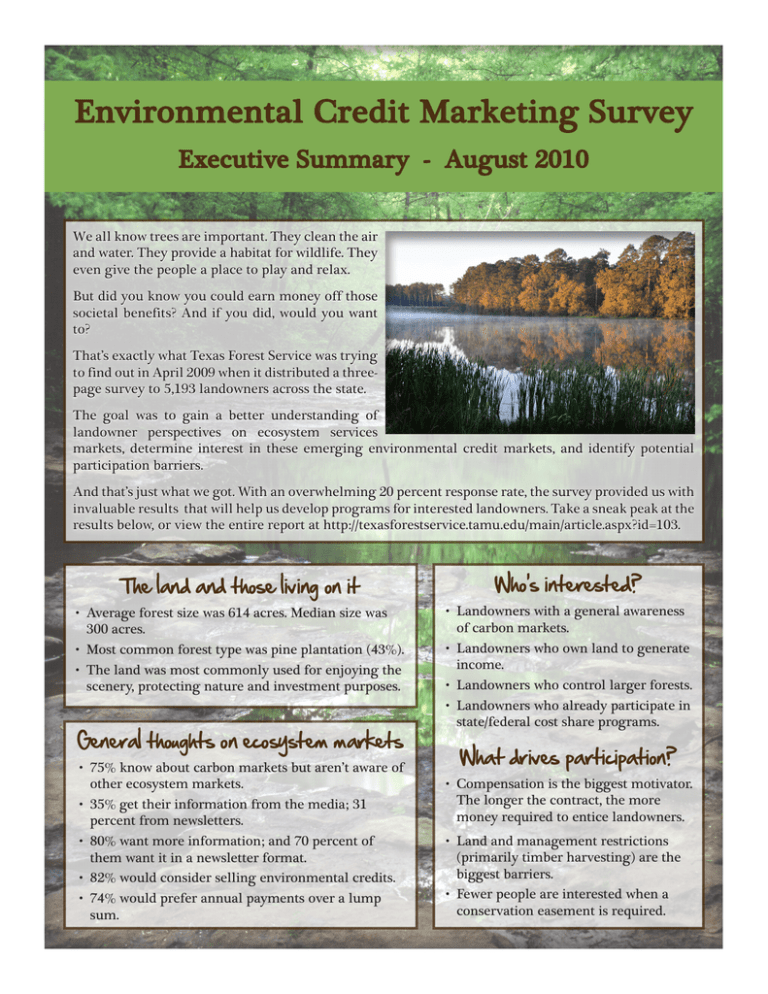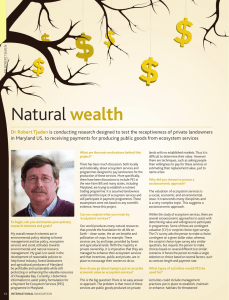Environmental Credit Marketing Survey Executive Summary - August 2010
advertisement

Environmental Credit Marketing Survey Executive Summary - August 2010 We all know trees are important. They clean the air and water. They provide a habitat for wildlife. They even give the people a place to play and relax. But did you know you could earn money off those societal benefits? And if you did, would you want to? That’s exactly what Texas Forest Service was trying to find out in April 2009 when it distributed a threepage survey to 5,193 landowners across the state. The goal was to gain a better understanding of landowner perspectives on ecosystem services markets, determine interest in these emerging environmental credit markets, and identify potential participation barriers. And that’s just what we got. With an overwhelming 20 percent response rate, the survey provided us with invaluable results that will help us develop programs for interested landowners. Take a sneak peak at the results below, or view the entire report at http://texasforestservice.tamu.edu/main/article.aspx?id=103. The land and those living on it Who’s interested? • Average forest size was 614 acres. Median size was 300 acres. • Most common forest type was pine plantation (43%). • The land was most commonly used for enjoying the scenery, protecting nature and investment purposes. • Landowners with a general awareness of carbon markets. • Landowners who own land to generate income. • Landowners who control larger forests. • Landowners who already participate in state/federal cost share programs. General thoughts on ecosystem markets • 75% know about carbon markets but aren’t aware of other ecosystem markets. • 35% get their information from the media; 31 percent from newsletters. • 80% want more information; and 70 percent of them want it in a newsletter format. • 82% would consider selling environmental credits. • 74% would prefer annual payments over a lump sum. What drives participation? • Compensation is the biggest motivator. The longer the contract, the more money required to entice landowners. • Land and management restrictions (primarily timber harvesting) are the biggest barriers. • Fewer people are interested when a conservation easement is required.











